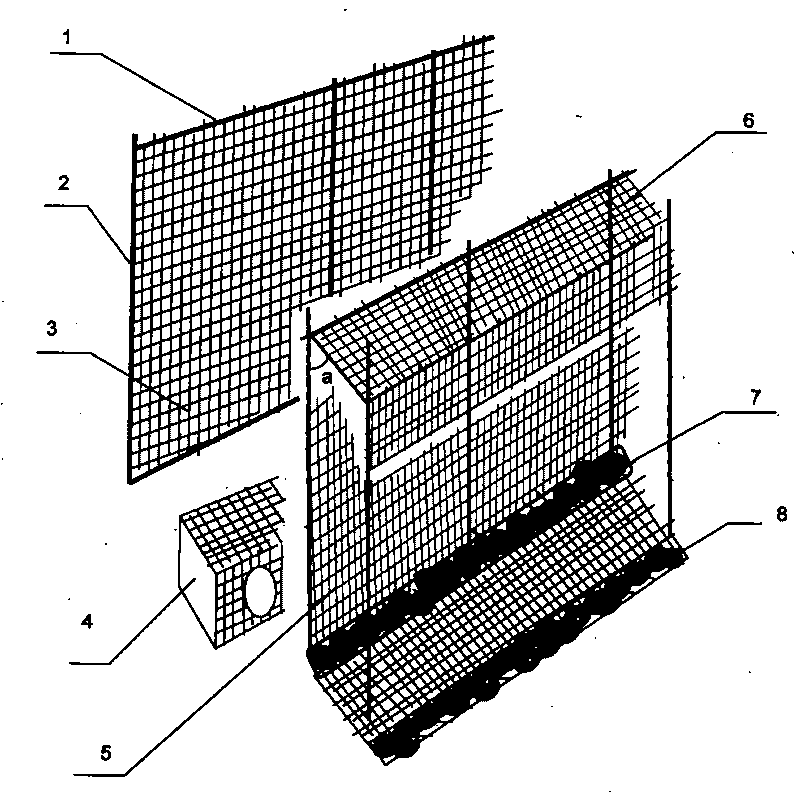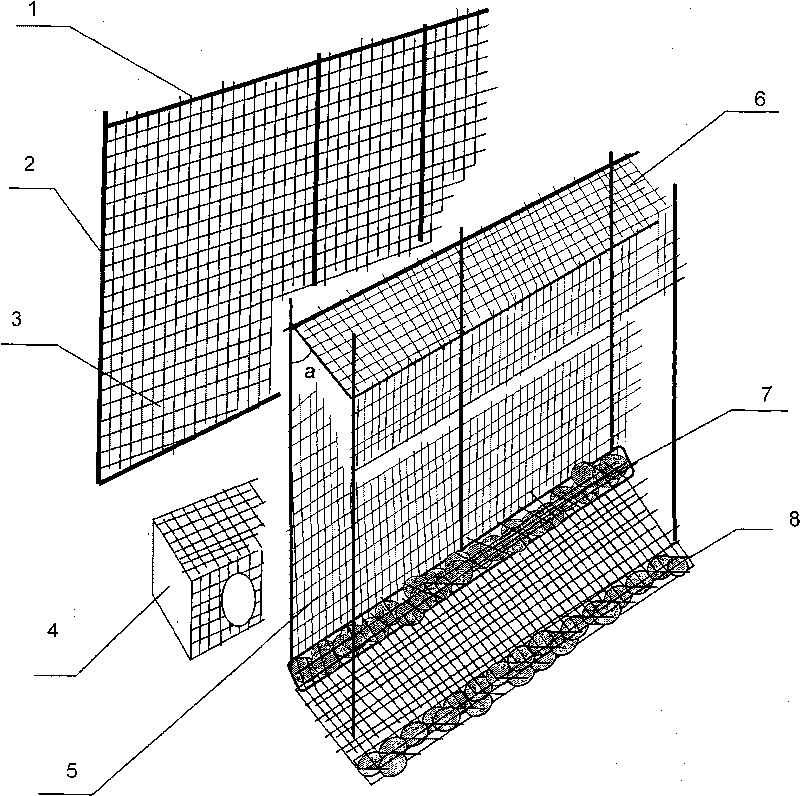Combined netting gear for culturing river crabs in purse seine in lake
A technology for river crabs and lakes, which can be used in fish farming, application, climate change adaptation, etc., and can solve problems that affect farming benefits
- Summary
- Abstract
- Description
- Claims
- Application Information
AI Technical Summary
Problems solved by technology
Method used
Image
Examples
Embodiment approach 1
[0011] 1. Site selection and piling. In the dry season, January is used to piling the fence with moso bamboo. The water depth in the fence area is 0.8m, and the water bottom is relatively flat. After the piles are laid, the surface of the water is 2.2m (the highest water level during the breeding period is 2.0m), the pile distance is 3m, and the bamboo piles of the fence are reinforced with inclined piles on the wind-receiving surface. The moso bamboo piles of the inner and outer fences are 3m apart. The fenced water surface area is 40 mu.
[0012] 2. Double-layer seine setting. The material of inner and outer layer fence 5,3 is polyethylene, and inner and outer layer fence 5,3 upper ends are respectively fixed on inner and outer two layers of fence moso bamboo piles with key rope. The mesh of the inner fence 5 is 2.5cm, the bottom is sewn together with the main and auxiliary gabions 7 and 8 respectively, and the distance between them is 0.5m, and they sink into the mud tog...
Embodiment approach 2
[0017] 1. Site selection and piling. In the dry season of December, moso bamboo is used to drive pilings. The water depth in the fence area is 1.0m, and the water bottom is relatively flat. After the piles are laid, the surface of the water is 2.5m (the highest water level during the breeding period is 2.0m), the pile distance is 2.5m, and the fence piles are reinforced with inclined piles on the wind-receiving surface. The bamboo piles of the inner and outer fences are 4.5m apart. The fenced water surface area is 50 mu.
[0018] 2. Double-layer seine setting. Inner and outer layer fence 5,3 are polyethylene materials, and inner and outer layer fence 5,3 upper ends are respectively fixed on inner and outer two layers of fence moso bamboo piles with key rope. The mesh of the inner fence 5 is 2.5cm, and the bottom is sewn together with the main and auxiliary gabions 7 and 8 respectively, and the distance between the two is 0.5m, and they sink into the mud together. The auxil...
PUM
 Login to View More
Login to View More Abstract
Description
Claims
Application Information
 Login to View More
Login to View More - R&D
- Intellectual Property
- Life Sciences
- Materials
- Tech Scout
- Unparalleled Data Quality
- Higher Quality Content
- 60% Fewer Hallucinations
Browse by: Latest US Patents, China's latest patents, Technical Efficacy Thesaurus, Application Domain, Technology Topic, Popular Technical Reports.
© 2025 PatSnap. All rights reserved.Legal|Privacy policy|Modern Slavery Act Transparency Statement|Sitemap|About US| Contact US: help@patsnap.com



